9.06.2022
Weather mostly OK for SpaceX's first Florida launch of June
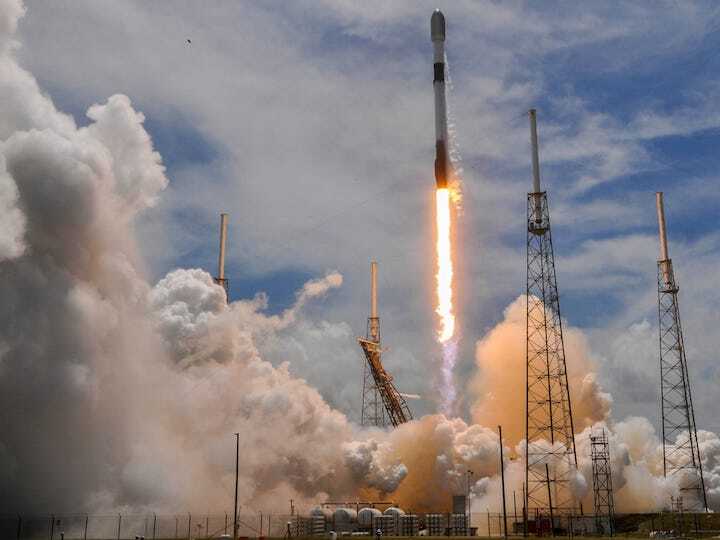
Conditions look favorable for SpaceX's first launch of June, a mission taking an Egyptian communications satellite to orbit that will open the gates to at least one more flight this month.
Space Force forecasters on Tuesday said weather should be 60% "go" for liftoff during a window that runs from 5:03 p.m. to 7:32 p.m. EDT Wednesday, a slight dip from the last report issued over the weekend. Cape Canaveral Space Force Station's Launch Complex 40 will host.
"Each day the potential for showers and storms will generally be highest in the early
afternoon across the spaceport, shifting to the interior of the peninsula later in the afternoon," Space Launch Delta 45 forecasters said Tuesday. "However, there will be a
threat for a few storms to drift back towards the east coast in the evening with westerly steering flow."
Upper-level winds and at-sea conditions for a booster recover were listed as "low-risk." In the event of a 24-hour delay, conditions would likely increase to 70% "go."
After liftoff and a flightpath straight east, the rocket will attempt a drone ship landing and should return to Port Canaveral before the weekend. This will mark the Space Coast's 23rd launch of the year.
Going to orbit is NileSat-301, a communications satellite that will provide satellite TV and internet connectivity to Egypt and eventually replace the older NileSat-201. Though a hefty satellite weighing some10,000 pounds, it won't be SpaceX's heaviest payload to date.
Looking at the rest of June, the schedule gets complicated: NASA on Monday said a June 10 mission slated to take cargo to the International Space Station had to be delayed to a to-be-determined date due to technical issues with SpaceX's Dragon spacecraft. That mission would've flown from Kennedy Space Center's pad 39A at 10:22 a.m. Friday.
"During propellant loading of the Dragon spacecraft, elevated vapor readings of mono-methyl hydrazine were measured in an isolated region of the Draco thruster propulsion system," NASA said in a statement. "The propellant and oxidizer have been offloaded from that region to support further inspections and testing."
That a technical issue was found with Dragon this close to launch means teams will need to push at least a few weeks. The mission, SpaceX's 25th under a resupply contract from NASA, could still fly this month but will come down to correcting the issue and NASA approving the fix.
Beyond that, SpaceX is also planning at least one Starlink mission this month. Though an exact date isn't available as teams work to move around vehicles, it will likely have to wait until the latter half of June.
United Launch Alliance also has one mission on tap this month: a national security satellite for the Space Force, known as USSF-12, will fly from the Cape's Launch Complex 41 on an Atlas V rocket. Teams are currently targeting Wednesday, June 29, with an exact liftoff time expected later.
Quelle: Florida Today
+++
Live coverage: SpaceX launches Egyptian satellite
SpaceX launched a Falcon 9 rocket Wednesday from Cape Canaveral with a telecom satellite for Egypt’s Nilesat. The Falcon 9 lifted off with the Nilesat 301 telecom payload at 5:04 p.m. EDT (2104 GMT), and the first stage booster landed on SpaceX’s drone ship in the Atlantic Ocean.
The 229-foot-tall Falcon 9 rocket blasted off from pad 40 at Cape Canaveral Space Force Station in Florida, beginning a 33-minute mission to place the roughly 9,000-pound (4.1-metric ton) Nilesat 301 spacecraft into an elongated transfer orbit ranging tens of thousands of miles above Earth.
Nilesat 301 is destined for an operating position in geostationary orbit more than 22,000 miles (nearly 36,000 kilometers) over the equator at 7 degrees west longitude, where it will provide TV broadcast and internet services over Egypt and other parts of Africa and the Middle East. The spacecraft will use its own propulsion system for the final maneuvers to reaching its operational orbit.
The launch Wednesday was the 23rd Falcon 9 launch of the year, and the first with a satellite heading toward geostationary orbit, a popular location for TV broadcasting and data relay spacecraft. It was also the first truly commercial launch into a geostationary transfer orbit worldwide this year.
The geostationary satellite launch market was once a lucrative business for launch providers, including SpaceX. But the satellite market has shifted to smaller spacecraft, including constellations flying in lower-altitude orbits, to beam broadband signals to consumers.
SpaceX operates the Starlink network, the world’s largest fleet of satellites, and other companies are in the process of developing and deploying their own constellations.
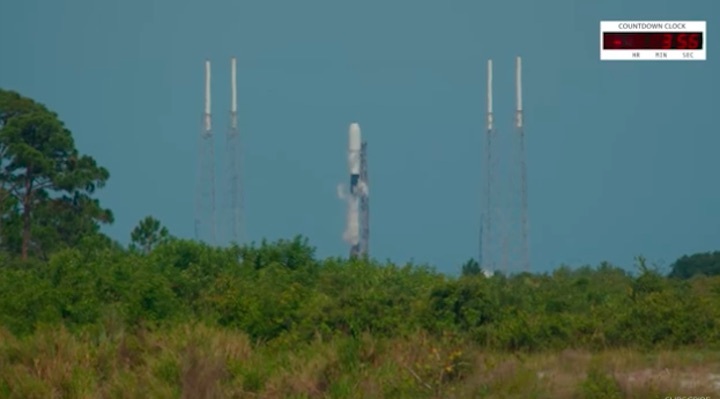
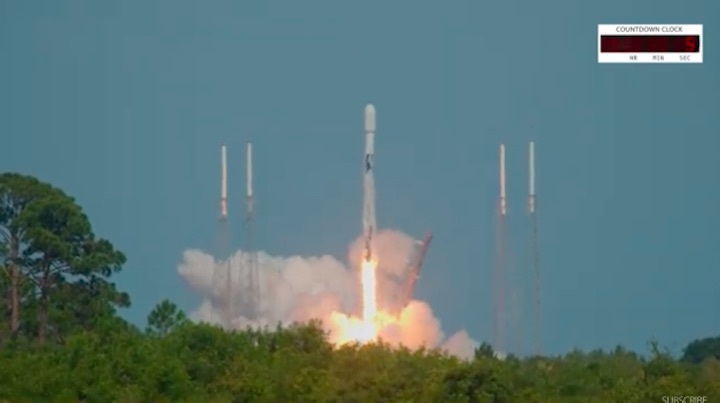

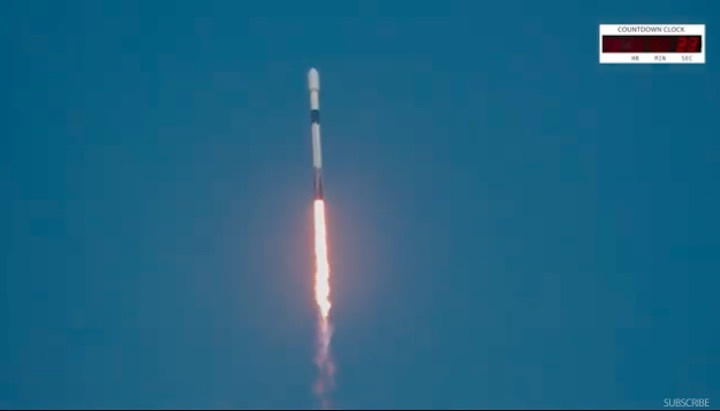
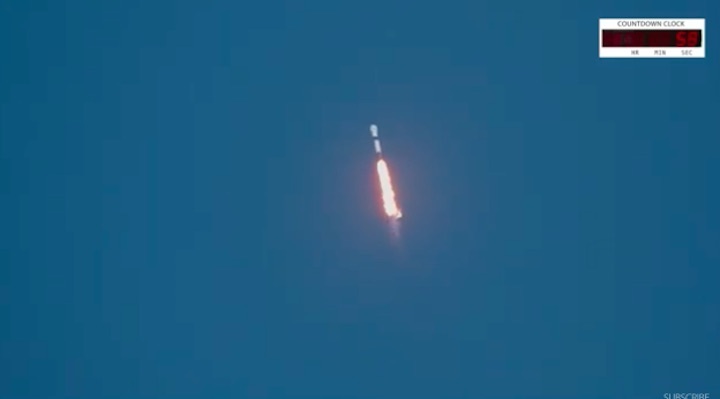
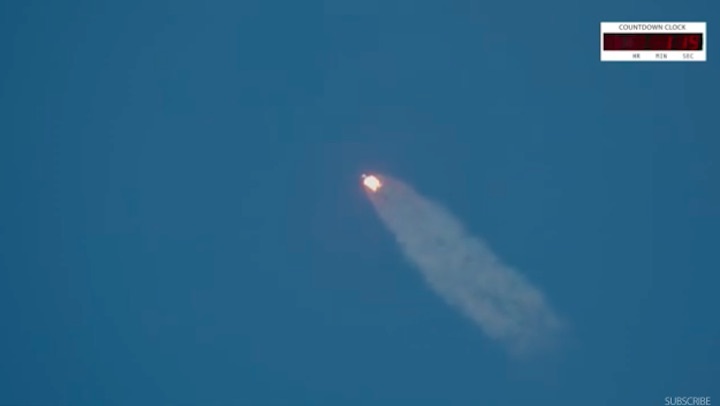
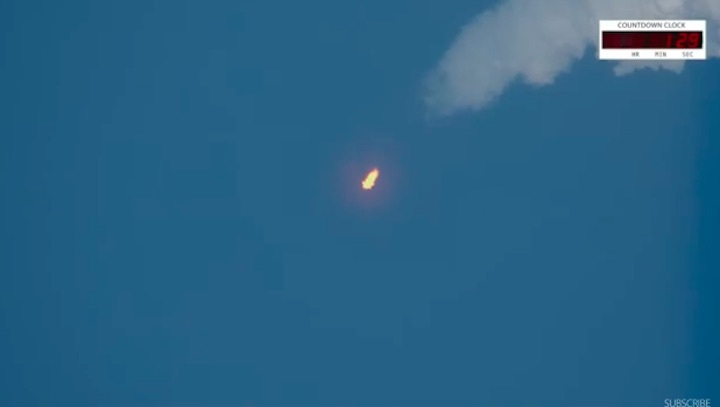

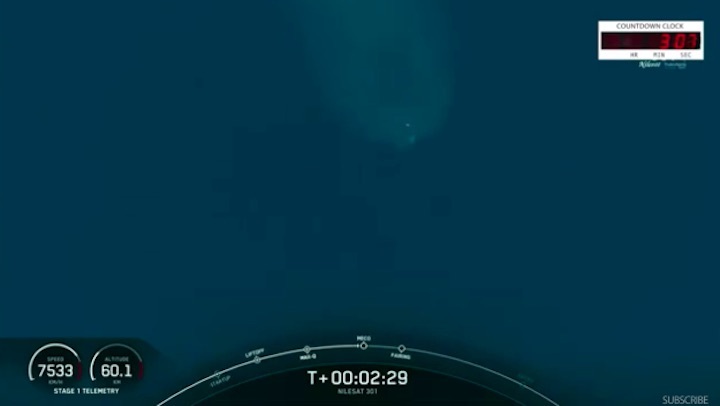
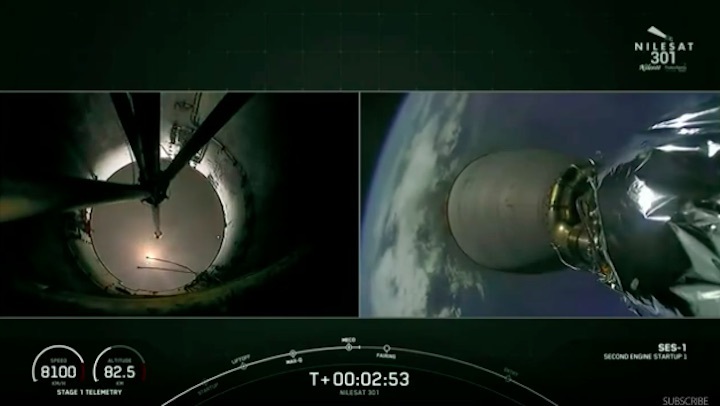
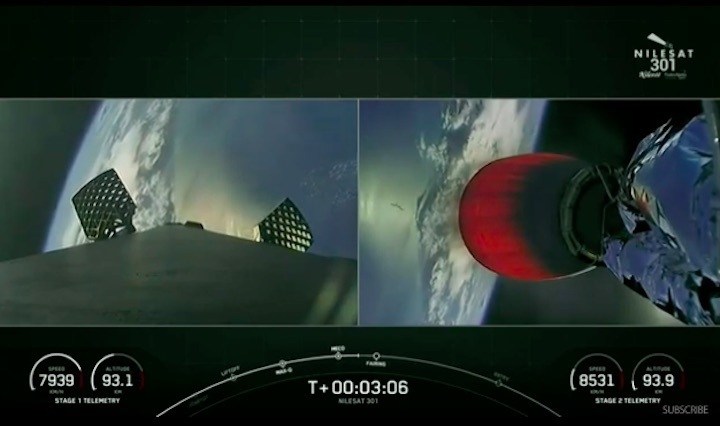

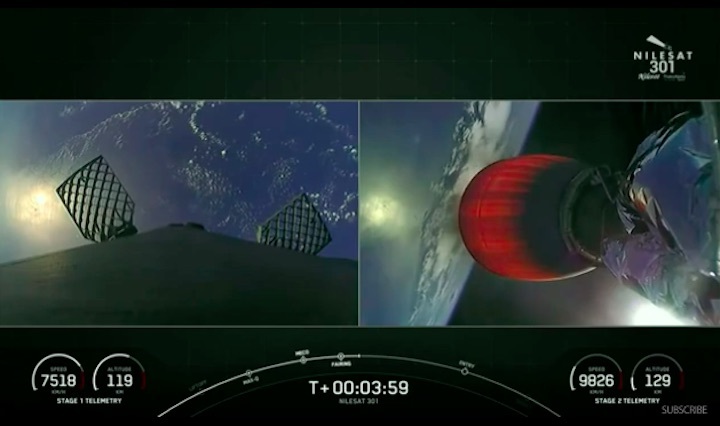

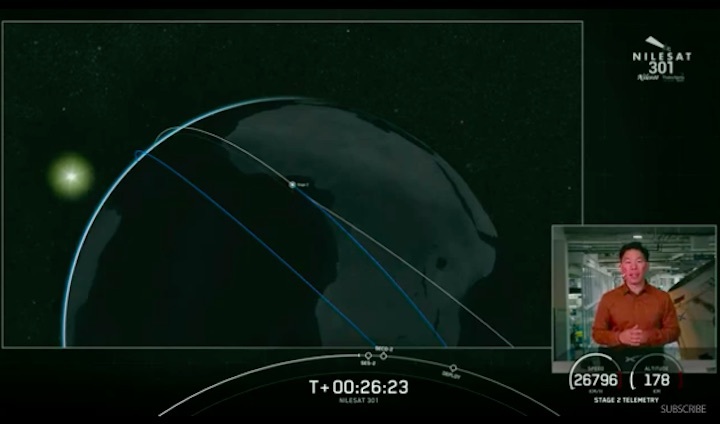
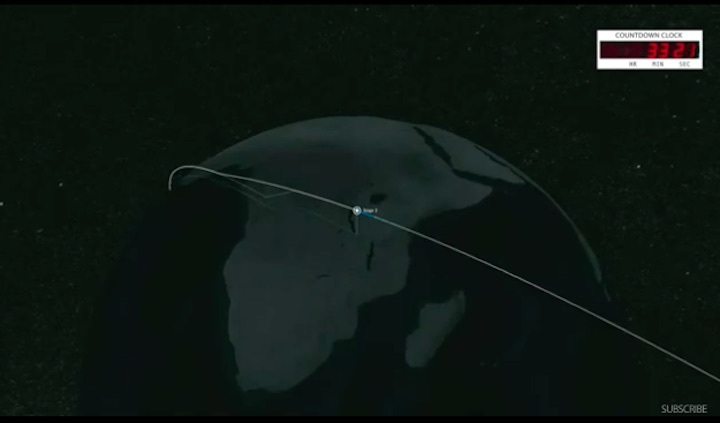
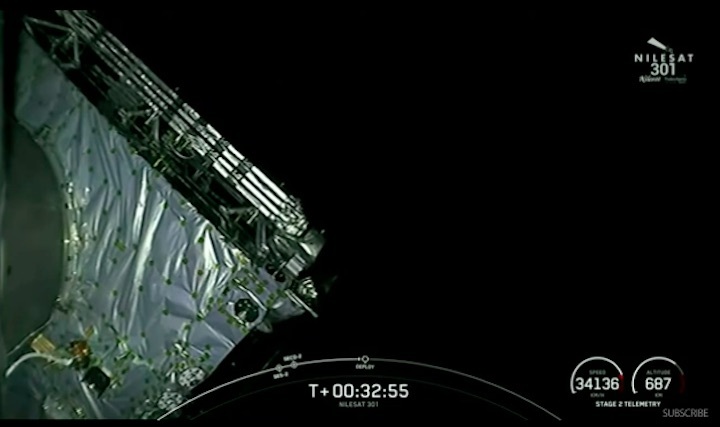

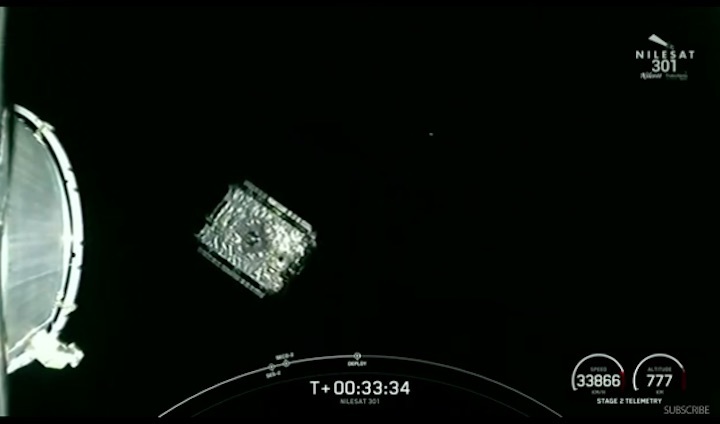
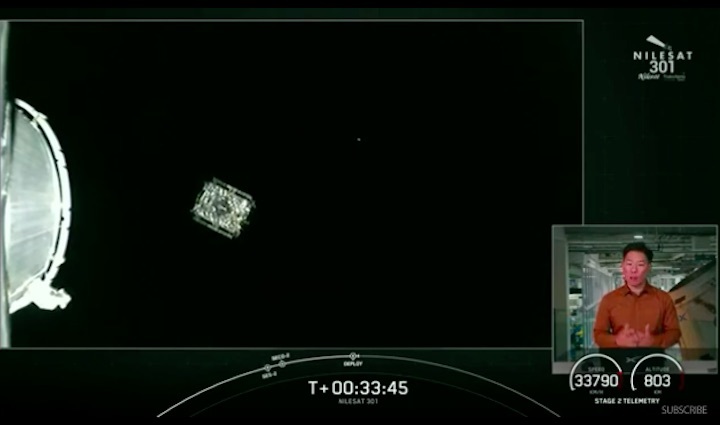
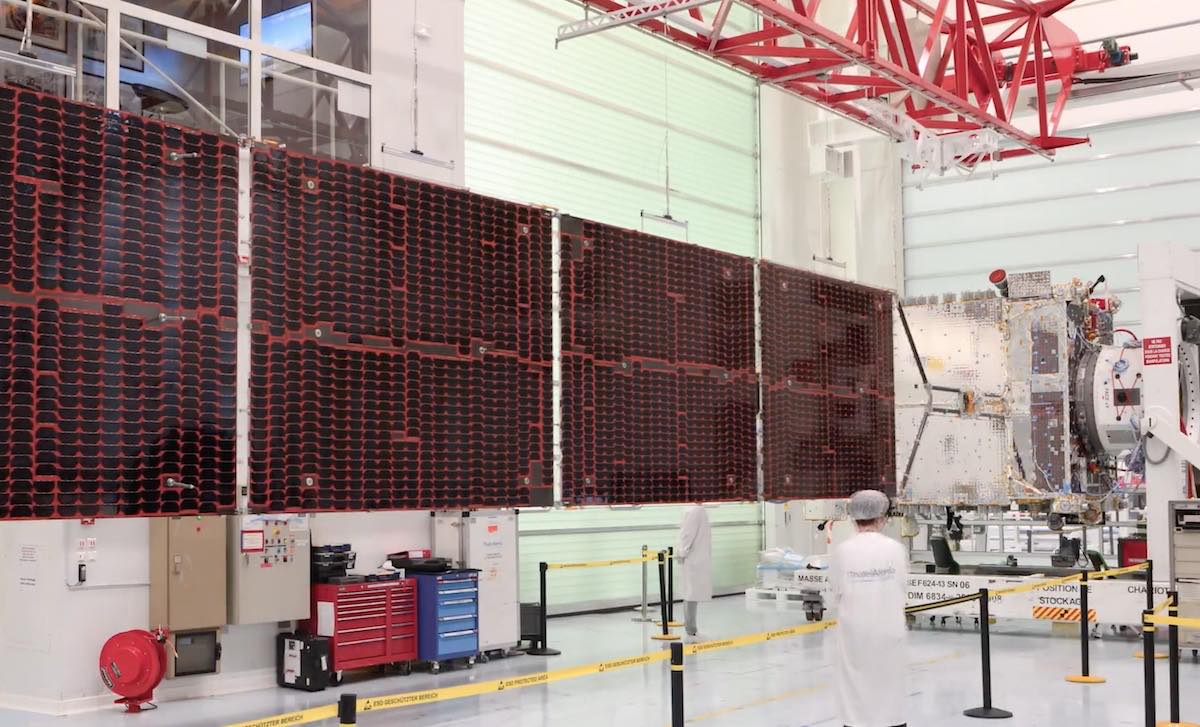
Nilesat 301’s launch was the first of up to six Falcon 9 rocket flights scheduled for June.
SpaceX loaded a million pounds of densified, super-chilled kerosene and liquid oxygen propellants into the Falcon 9 in the final 35 minutes of the countdown Wednesday. The Falcon 9 transitioned to internal power and pressurized its propellant tanks before igniting nine Merlin main engines at T-minus 3 seconds.
After passing an automated health check, computers commanded four hold-down clamps to open, clearing the way for the Falcon 9 lift off from pad 40 with 1.7 million pounds of thrust.
Launch occurred 5:04 p.m. EDT (2104 GMT) Wednesday at the opening of a 2-hour, 29-minute window. Forecasters from the U.S. Space Force predicted a 60% chance of favorable weather for launch Wednesday, with the primary concern associated with threatening clouds from nearby thunderstorms.
But the storms held off just long enough to allow the Falcon 9 to take off with Nilesat 301.
Once it departed the pad, the Falcon 9 arced toward the east from Cape Canaveral over the Atlantic Ocean and exceeded the speed of sound in about one minute. The first stage booster shut off its engines and separated from the Falcon 9’s upper stage at T+plus 2 minutes, 37 seconds.
The booster stage coasted through space for a few minutes before plunging back into the atmosphere for a vertical, rocket-assisted landing on SpaceX’s drone ship in the Atlantic nearly nine minutes after liftoff.
The Falcon 9’s first stage — tail number B1062 — flew for the seventh time. It debuted with the launch of a U.S. military GPS satellite on Nov. 5, 2020, and has since launched another GPS payload, the Inspiration4 and Axiom’s Ax-1 private astronaut missions, and two missions carrying Starlink internet satellites into orbit.
On its previous six flights, the booster carried 104 satellites and eight people toward orbit.
The Falcon 9’s upper stage ignited its single Merlin engine two times, first to reach a temporary parking orbit, then to propel Nilesat 301 into an elongated transfer orbit stretching tens of thousands of miles above Earth. Deployment of Nilesat 301 from the Falcon 9’s upper stage occurred about 33 minutes into the mission.
Built in France by Thales Alenia Space, Nilesat 301 will support Ultra HD television broadcasts and internet connectivity, replacing the Nilesat 201 spacecraft launched in 2010. The spacecraft is owned by Nilesat, a company controlled by Egyptian government organizations.
Quelle: SN, SpaceX
